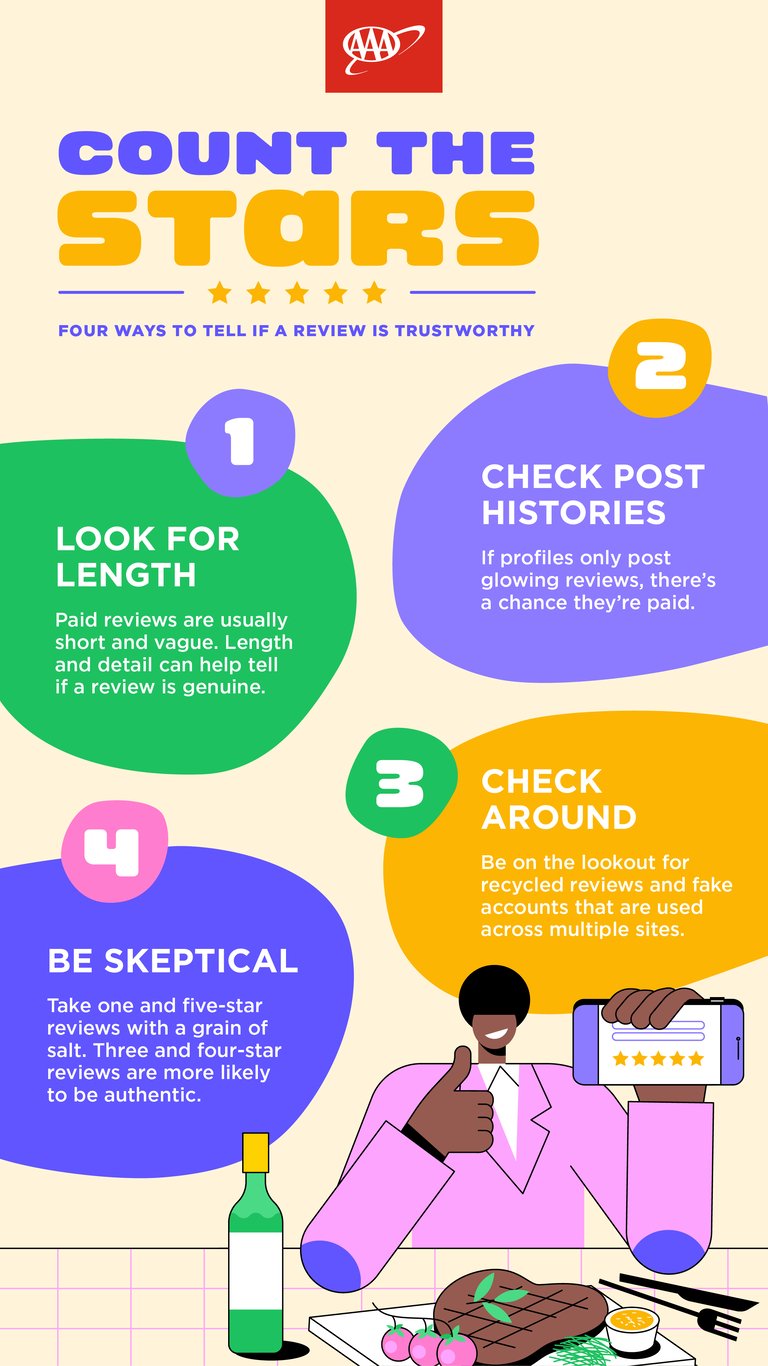4 Ways to Tell If Travel Reviews Are Trustworthy
How to recognize real customer reviews versus fake or paid reviews



If word-of-mouth was once the most important factor in promoting a new business or product, today it’s the review. There aren’t many purchases people are willing to make without first scouring reviews, and general searches for new vacuums or the best hotels are often sorted automatically by the ratings from those reviews.
As such, it’s critical for business owners to score plenty of 5-star raves or risk getting lost in the sea of search results. While this risk could result in better customer service and higher product quality, it can also lead to business owners purchasing fake positive reviews, or even sabotaging competitors with untrue negative reviews.
Unlike traditional word-of mouth-insights, online reviews are somewhat anonymous to the public, making them easier to fake. There’s often no foolproof way to confirm a review is fake, especially as technology becomes more sophisticated. But there are some red flags that warrant a deeper dive into a review’s authenticity.
Before you book a hotel, tour, or dinner reservation on your next vacation, here’s a crash course in how to tell if a travel review is trustworthy.

Consider the source
It’s unlikely you personally know the person who left a review, but that doesn’t mean they’re completely anonymous. Most review sites require a user profile, and you can use this to investigate a user’s activity. If a user only posts glowing reviews that use similar language (often very general praise), there’s a greater chance these are purchased reviews.
An extreme number of reviews in a short period of time should also raise an eyebrow, as most real people have not stayed in 200 different boutique hotels in the past year. Even if the number is not exaggerated, a random burst of activity in a short period can be a sign that the reviews are through a paid service, not authentic reviewers.
Keep in mind that bots and other paid services are not the only untrustworthy sources on the Internet. Real humans lie too, especially if they’re trying to undercut competition. These fake negative reviews can be harder to pinpoint, but reviewing the user’s profile can reveal clues.

Look for length
Although this is starting to change, it’s still true that purchased reviews are often short and generic. Instead of describing a fantastic meal and naming a favorite waiter or concierge, a fake review is more likely to say something like, “Wonderful place. I will be back!” Most real people come to review sites to gush about amazing experiences in great detail, or offer specifics on a negative experience, not to leave a generalized statement.
Of course, businesses with only a small number of reviews or a recent negative review may be inspired to create a few positive reviews themselves, masquerading as guests. These reviews will sound human (because they are), making them harder to spot. But look for language that smacks of marketing—like phrases pulled from the company’s website—as an indicator. A similar style of review that pops up several times in a row is also a sign that these may have originated from within the company.

Check multiple sites
Businesses need bang for their buck, so paid review services often include peppering multiple major sites with glowing reviews. In these cases, they typically recycle reviews, user accounts, or even word choices, so look to see if copycats appear on other sites. If so, they’re probably purchased.
Take the middle path
Paid praise is generally a five-star review and inauthentic sabotage is usually a one-star review, so read the three-star reviews for a true taste of what’s happening. Sure, you should also look at the extremes and take them with a grain of salt, but it’s rare that a middle-of-the-road review is fake.
Finally, always re-sort reviews by recency instead of rating to avoid being duped by brands that have paid for hundreds of five-star reviews to reach the top spot. What’s happened recently can often be more telling than what’s happened over the life of a brand.